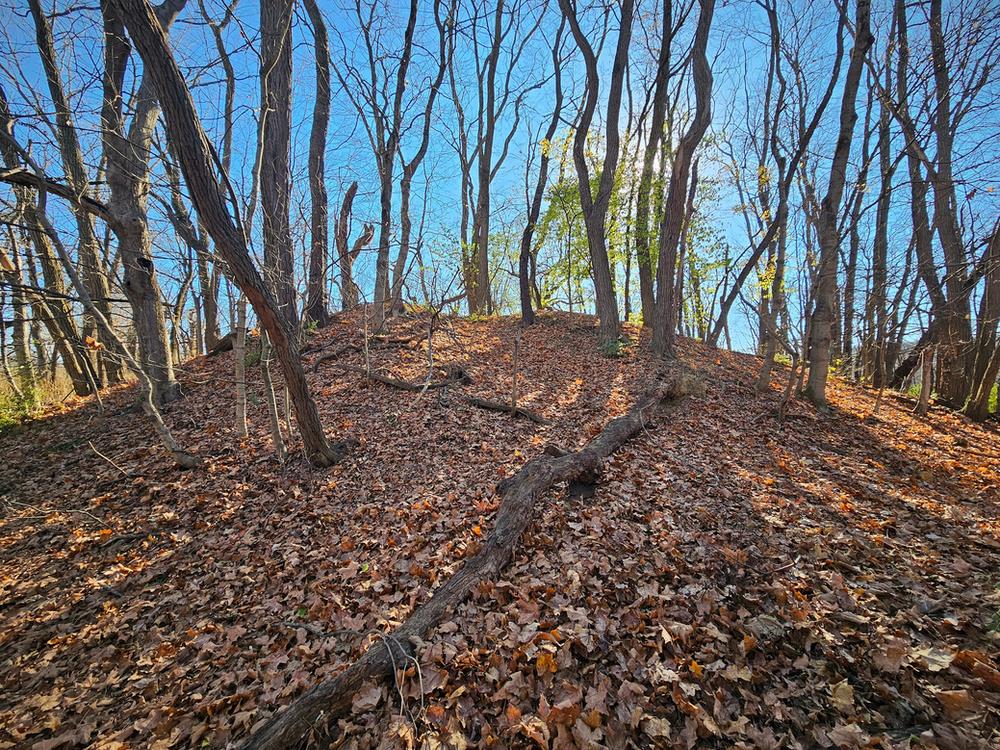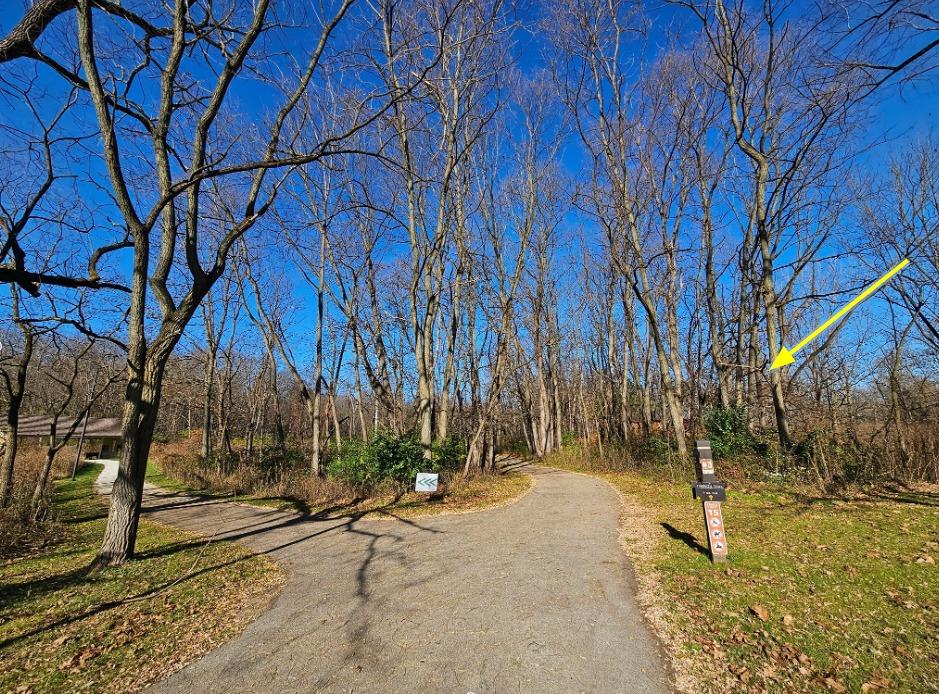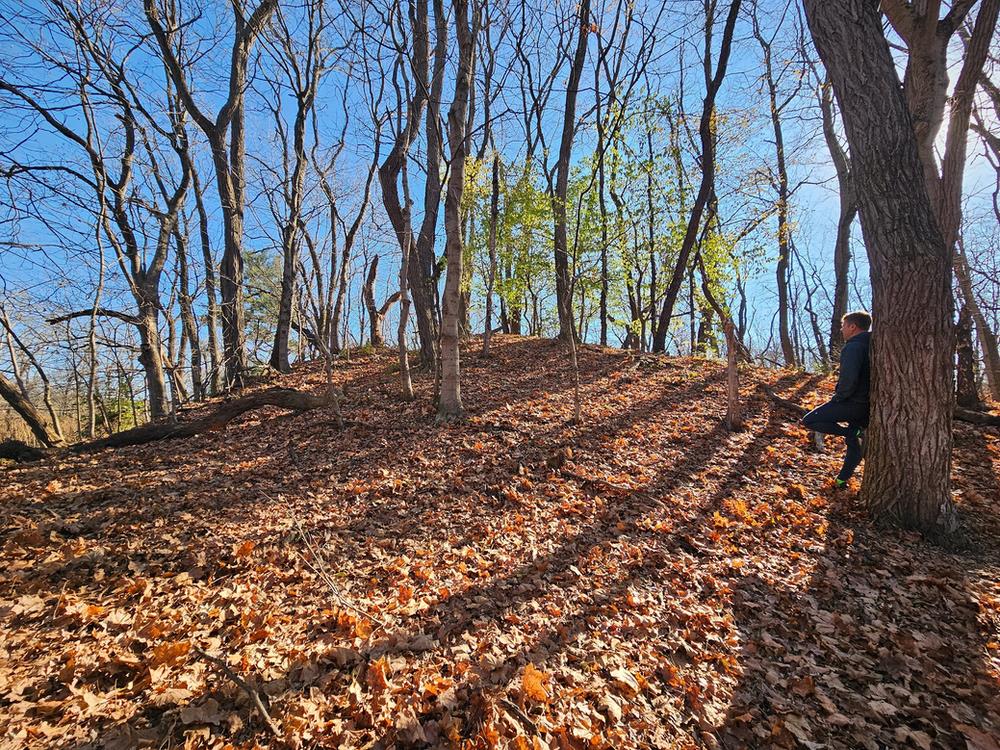For thousands of years, Native Americans stamped their legacies on the landscapes of Ohio, constructing tens of thousands of earthen mounds and expansive earthworks. Between 100 BC and 500 AD, the Hopewell, renowned as the world's greatest mound builders, inhabited much of Ohio, including Cuyahoga Valley, engaging in deer and other game hunting, fishing, and the cultivation of sunflower, squash, and various other plants. Residing mainly in small villages along waterways, the Hopewell paid tribute to their departed by interring them beneath elaborately constructed mounds, a custom influenced by the preceding Adena culture.
In the 19th century, archaeological surveys carried out across Ohio extensively recorded a vast number of Hopewell burial mounds and earthwork sites. Prior to and since, factors such as agricultural practices and urban development have led to the near-complete obliteration of these ancient mounds and earthworks, with few exceptions. Metropolitan areas like Cleveland, Columbus, Akron, and Cincinnati, which once boasted thousands of mounds and earthworks, now retain only a few remnants of Hopewell tradition.

One example of the Hopewell culture's presence in northern Ohio lies between Cleveland and Akron, within the confines of Cuyahoga Valley National Park. Concealed amidst dense vegetation, just a short distance from the popular Ohio & Erie Canal Towpath Trail's Botzum Trailhead, rests a 2000-year-old Hopewell burial mound. Unlisted on any park map, inquiries to park rangers are likely to be met with a courteous "we can't help you with that." Nevertheless, with the guidance available in Charles Whittlesey's "Descriptions of Ancient Works in Ohio" (1850) and "Ancient Earth Forts of the Cuyahoga Valley, Ohio" (1871), discovering the mound becomes rather straightforward.
To locate the mound, simply walk along the Towpath Trail from the Botzum Trailhead, staying right at the split leading to the Cuyahoga Valley Scenic Railroad's Botzum Station.

The burial mound, visible from the trailhead especially when the trees are bare, sits roughly 100 feet from the trailhead, to the right of the Towpath Trail by about 20 feet. If you've ever biked or walked north along the Towpath Trail from the Botzum Trailhead, you've unknowingly passed it without recognizing its presence.
Referred to by several names throughout the last century and a half such as Botzum Mound, Big Dog Mound, and Schoonover Mound, the ancient burial mound boasts a circumference exceeding 300 feet, a height of roughly 15 feet, and is blanketed with oak and maple trees. There is plenty of room to walk along the mound's northwestern perimeter, however, the remaining sides are densely populated with brush and deadfall.

In contrast to the well-manicured mounds showcased in Chillicothe's Hopewell Culture National Historical Park, the cultural epicenter of the Hopewell, the Botzum Mound seamlessly blends in with the natural scenery, appearing as nothing more than a small knoll.
A five day excavation of the mound conducted in the late 1800s by students of Buchtel College revealed an urn filled with ashes and charred bones, and stone axes, both indicative of Hopewell burial practices. Upon examining the remains, it is believed that two individuals, likely holding considerable societal significance, were buried beneath the mound. Today, a significant depression along the northwestern slope of the mound serves as visible proof of its excavation in the 1800s.

The mound's initial documentation can be attributed to Charles Whittlesey, a geologist, historian, and Civil War veteran, notably featured in his work "Ancient Forts of the Cuyahoga Valley, Ohio" (1871). This comprehensive catalog detailed various ancient Native American forts, mounds, burial grounds, earthworks, caches, and pit dwellings discovered in Cuyahoga Valley. In his account, Whittlesey describes the Botzum Mound as 18 feet tall, situated south of Bath Road, west of Riverview Road, and east of the depot. Additionally, a second, smaller burial mound west of the depot, now Botzum Station, is mentioned in his book, although my attempts to locate it have been unsuccessful.

An article from the Akron Beacon Journal, dated September 24, 1884, discusses the excavation of Botzum Mound by Buchtel College and several other nearby Native American burial sites. In close proximity to Botzum Mound, atop a hill, there once existed a 5-acre burial ground, believed to contain 500 to 1000 individuals. Unfortunately, over 150 years ago, this burial ground was recklessly plowed over, and all traces of it have since been lost.
According to the article, some of the graves contained not only individuals but also interred deer, panthers, and dogs, accompanied by artifacts such as skinning knives, arrowheads, charcoal, and ashes. The burial practice of interring animals alongside humans is exceptionally rare in Hopewell archaeology. To my knowledge, only two such examples of this exist today, and neither occurred in Ohio. This likely suggests that the burial ground belonged to a later society, possibly the Whittlesey culture.
Cuyahoga Valley National Park contains more than 200 Native American archaeological sites, spanning from the era of the Hopewell (100 BC to 500 AD) to the time when the Whittlesey culture inhabited the region (1000 AD to 1650 AD). Greenwood Village, a ceremonial earthwork site associated with the Whittlesey culture, which can be reached by hiking the Old Carriage Road Trail, is the only site marked on park maps. Over the years, extensive plowing has affected the site, making it challenging to discern visibly, but it remains present for those willing to hike to it. In addition to Botzum Mound, some of the other unmarked sites include burial grounds in the forest behind the Frazee House, a star-shaped mound built by the Erie near Botzum Mound, pit dwellings and very eroded earthworks behind Hale's Farm, two moderately sized burial mounds east of Hale's Farm, Stanford Knoll, Everett Knoll, Point Mound, numerous earthen embankments believed to have been forts near Everett, embankment walls believed to have been created for defensive purposes in Boston Nathaniel Point/Point-Biro Mound, Boston Mound, various cache pits and a burial mound between Furnace Run and the Ohio & Erie Canal, a very large circular earthwork on a terrace west the Cuyahoga River near Northampton, and numerous others that are fairly challenging to locate and require a good deal of bushwhacking to reach. Due to the sensitive nature of those sites, I will not comment on their locations.
If exploring Ohio's Native American archaeological sites is something that interests you, ,Hopewell Culture National Historical Park, Serpent Mound, ,Newark Earthworks, ,Alligator Mound, Fort Ancient Earthworks, ,Leo Petroglyphs, ,Barnesville Track Rocks, and ,Miamisburg Mound are a few places that are definitely worth spending time at. Hopewell Culture National Historical Park, Newark Earthworks, and Fort Ancient Earthworks, collectively known as Hopewell Ceremonial Earthworks, were inscribed on the UNESCO World Heritage List in September 2023.
https://www.greatamericanhikes.com/post/cuyahoga-valley-national-park-s-forgotten-ancient-native-american-burial-mound
 CampingSurvivalistHuntingFishingExploringHikingPrivacy PolicyTerms And Conditions
CampingSurvivalistHuntingFishingExploringHikingPrivacy PolicyTerms And Conditions
